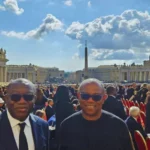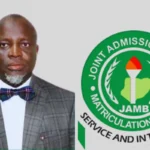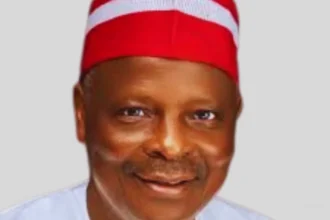DAMASCUS — In a stunning development, Abu Mohammed al-Jolani, a former commander of al-Qaeda and the current leader of Hayat Tahrir al-Sham (HTS), has emerged as the new leader of Syria. This marks a dramatic shift in the country’s political landscape after years of civil war and the recent collapse of Bashar al-Assad’s regime.
Al-Jolani’s rise to power has drawn global attention, with many questioning what this means for Syria’s future, the region’s stability, and international relations. Here’s everything you need to know about the new leader and his journey to this pivotal moment.
Who Is Abu Mohammed al-Jolani?
Abu Mohammed al-Jolani, whose real name is Ahmad Hussein al-Shara, was born in 1982 in Syria’s Deir ez-Zor province. He studied medicine before turning to radical Islamist ideology in the wake of the U.S. invasion of Iraq in 2003. Jolani joined al-Qaeda’s Iraqi branch, which later became the Islamic State of Iraq and Syria (ISIS), where he rose through the ranks as a key operative.
In 2011, amid Syria’s burgeoning civil war, Jolani returned to Syria to establish Jabhat al-Nusra, al-Qaeda’s Syrian affiliate. The group quickly became one of the most formidable forces in the Syrian conflict, known for its battlefield prowess and extremist ideology.
A Controversial Break with Al-Qaeda
In 2016, Jolani publicly severed ties with al-Qaeda, rebranding his group as Hayat Tahrir al-Sham (HTS). This move was seen as an attempt to distance himself from global jihadism and gain legitimacy as a Syrian nationalist movement. HTS sought to portray itself as a pragmatic opposition force capable of governing territories under its control.
Under Jolani’s leadership, HTS established a “Salvation Government” in northwest Syria, focusing on governance, social services, and presenting itself as a stable alternative to the Assad regime. This rebranding, however, has been met with skepticism, as many still view HTS as a militant organization.
Jolani’s Role in the Syrian Conflict
Jolani has been both a military tactician and a political strategist. He is credited with leading major offensives against Assad’s forces, gaining control of key territories in northwest Syria, including Idlib. Despite his controversial past, he has positioned himself as a unifying figure among opposition factions, advocating for a pluralistic and tolerant vision for Syria’s future.
His leadership has also included efforts to engage with foreign powers and NGOs to gain recognition and humanitarian aid for HTS-controlled areas, further signaling his desire to pivot from extremist roots.
A New Chapter for Syria
Jolani’s ascension as Syria’s leader comes at a time of profound uncertainty. Following Assad’s departure, opposition factions swiftly took control of key cities, with Jolani emerging as the most prominent figure. His leadership raises critical questions about Syria’s future:
- Governance: Can Jolani transition from a military commander to a political leader capable of uniting Syria’s diverse factions?
- International Relations: Will foreign powers recognize his government, or will his past affiliations with al-Qaeda continue to isolate Syria diplomatically?
- Security: Can he bring stability to a country ravaged by over a decade of war, or will divisions among opposition groups spark new conflicts?
The Global Reaction
The international community has responded with cautious skepticism.
- United States: The U.S. Department of State has not yet recognized Jolani’s leadership, citing his history with al-Qaeda. However, some analysts argue that his recent efforts to moderate HTS’s image could open channels for dialogue.
- Russia and Iran: As Assad’s former backers, Moscow and Tehran are likely to view Jolani’s rise with hostility, complicating efforts for a peaceful transition.
- Turkey: Having supported opposition factions in the past, Ankara may find an ally in Jolani if he can stabilize the northern regions bordering Turkey.
What Lies Ahead for Syria?
Jolani faces immense challenges in consolidating power and rebuilding a fractured nation. Syria’s infrastructure lies in ruins, millions remain displaced, and deep sectarian divisions persist.
Despite his controversial past, some Syrians see Jolani as a symbol of resilience against Assad’s rule. Others remain wary, fearing that his leadership could lead to further international isolation or internal repression.
Jolani’s Vision for Syria
In a recent address, Jolani called for “unity among Syrians” and promised a new era of governance based on “justice, tolerance, and rebuilding.” He urged international actors to engage with his government, emphasizing his commitment to ending the war and fostering national reconciliation.
While his words mark a significant departure from his militant origins, only time will tell whether Jolani can deliver on his promises and guide Syria toward a peaceful and prosperous future.
Key Facts About Abu Mohammed al-Jolani
- Birth Name: Ahmad Hussein al-Shara
- Born: 1982 in Deir ez-Zor, Syria
- Education: Briefly studied medicine before joining jihadist groups
- Affiliations: Formerly with al-Qaeda; leader of Hayat Tahrir al-Sham (HTS)
- Current Role: Leader of Syria after Assad’s regime collapse
As Syria embarks on a new chapter under Jolani’s leadership, the world watches closely, hoping for peace but prepared for the challenges ahead.

















